Table of Contents Show
Shonen is, quite literally, for the boys. The target demographic of these manga and anime are teenage boys, and they almost always feature a male protagonist. Traditionally, these protagonists fit a very specific image: strong, unwavering, and often lacking in most emotions other than anger or bravado. Naruto‘s Naruto, Bleach‘s Ichigo, and One Piece‘s Luffy are the cornerstones of contemporary shonen protagonists.
Each exhibits most of these traits to some degree. These characters are all born with power and are essentially destined to lead others. They are stoic in the face of almost any adversary, and only shed a tear or two when it’s relevant to the plot. Two recent anime, My Hero Academia (僕のヒーローアカデミア) and Demon Slayer (鬼滅の刃) (adapted from manga of the same titles) buck this trend with protagonists who exhibit much greater empathy than their traditional shonen counterparts. Each of these anime features a secondary character who arguably serves as the manifestation of the shonen protagonist trope. These characters double as foils for the stories’ protagonists, further exploring the traditional trope.
My Hero Academia
My Hero Academia (Boku no Hero Academia) is an action/fantasy shonen set in modern-day, but the majority of the population possesses a superpower (or “quirk” in the English translations). In this world, becoming a hero to fight society’s villains is an official profession, and entire schools are dedicated to hero studies. The story’s protagonist, Izuku Midoriya (緑みどり谷や出いず久く), wants nothing more than to be a hero despite being born without a quirk.
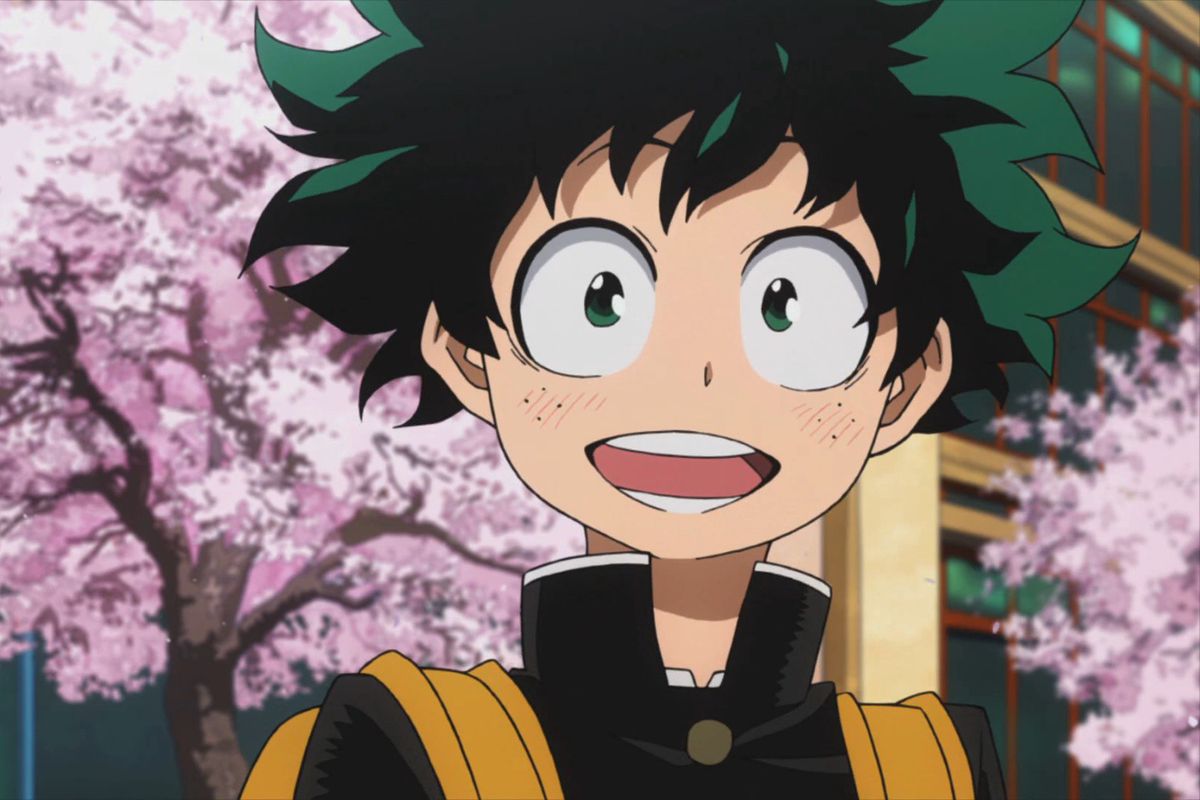
His passion to become a hero is seen as a pipe dream and his classmates, his childhood best friend, and even his own mother all acknowledge his dream to be impossible. Despite his setbacks, Midoriya never gives up on his dream of becoming a hero just like his idol, All Might. Like All Might, Midoriya wants to be a hero who can save everyone with a smile, so they know they are safe even in the face of danger.
All Might (オールマイト) is a Captain America meets Superman sort of hero, complete with over-the-top charisma and overpowered super-strength. He’s Japan’s number one hero, officially ranked at the top of the Hero Billboard Chart. By a twist of fate, Midoriya finally meets All Might, who decides to bestow him with his quirk, “All For One.”
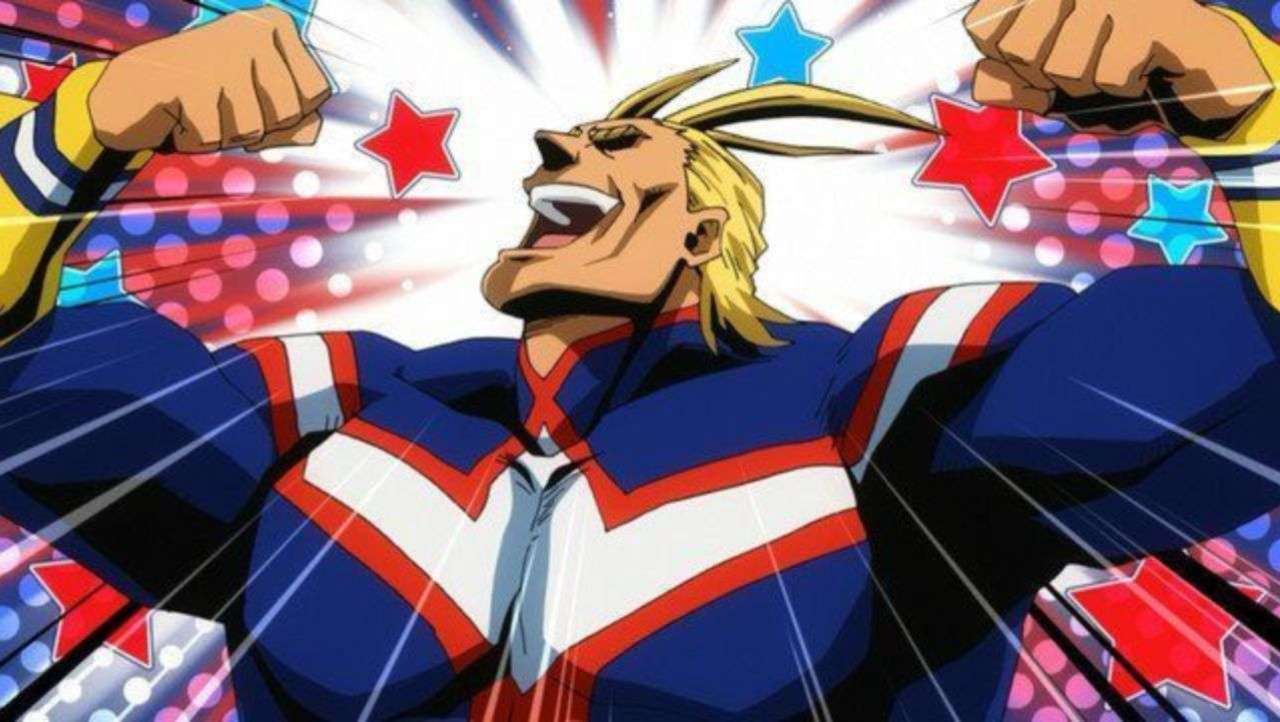
During their first meeting, Midoriya accidentally discovers All Might’s secret: his idol is a scrawny man who uses his “muscular form” for fighting and publicity. In addition, All Might admits to Midoriya that he even feels fear when facing danger and that his iconic smile is not only to put citizens at ease but also himself. This discovery humanizes All Might for Midoriya (although he still idolizes him to a fault), and also begins to break down the shonen trope that all heroes are perfect and invincible right from the story’s start.
Midoriya vs Bakugo
If My Hero Academia followed the traditional shonen protagonist trope, Katsuki Bakugo (爆ばく豪ごう勝かつ己き) — Midoriya’s childhood classmate-turned-rival — would be the story’s main character. Instead, he functions as more of a satirical take on the trope. His character illustrates the dangers of glorifying a narrow view of masculinity: suppressing emotions, relying on brute strength to solve problems, and rejecting help from others. Bakugo, who struggles with communicating and working with his peers, embodies the toxicity this kind of personality can create.
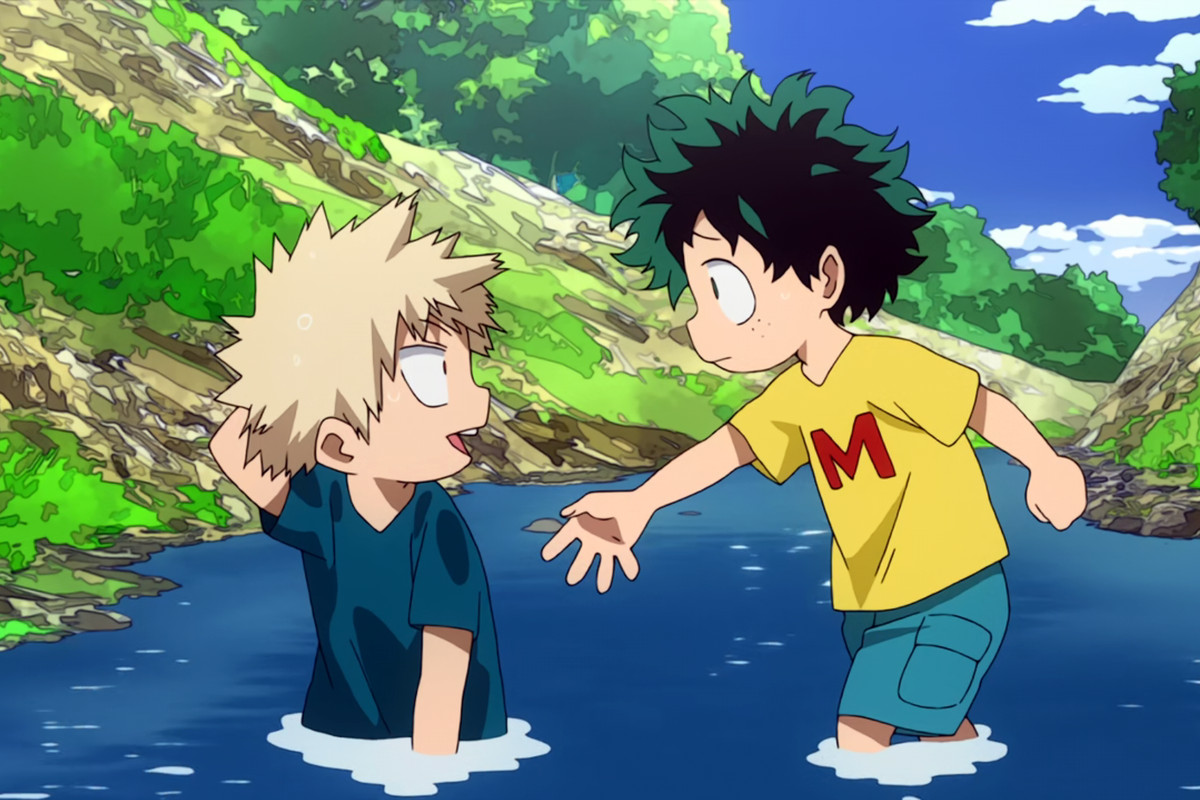
When Bakugo manifests his quirk at age four, he begins to make fun of Midoriya’s dream of becoming a hero despite not having a quirk. As he ages, Bakugo’s ego is continually fanned by his classmates, his teachers, and even pro-heroes until he’s convinced that everyone else is weak compared to him, and therefore below him. He is praised for his boldness, his determination, but above all else, his power, until he believes that his strong quirk is the most important thing about himself.
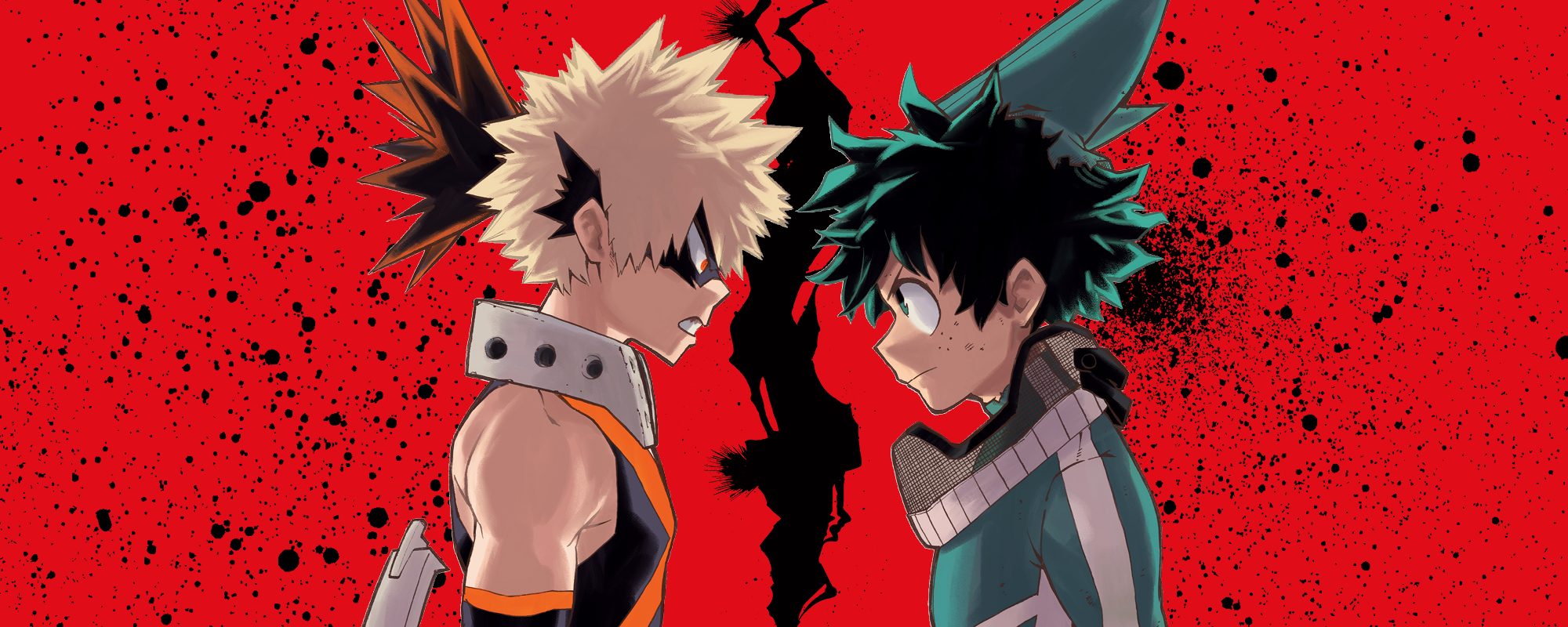
As a result, Bakugo is impulsive, aggressive, powerful, and, like Midoriya, determined to become the number one hero. Unlike Midoriya, Bakugo’s drive is purely to prove that he’s the best, and he craves to be acknowledged as such. His main emotions are rage and a sort of sadistic determination. He vows to defeat anyone — including his allies and classmates — who stands in his way, and he shouts “Die!” more often than not for someone aspiring to be a hero. Bakugo ultimately serves as a foil to Midoriya, representing a direction the story could have taken if he were the protagonist.
Midoriya takes most of the traits of a traditional shonen protagonist and throws them out the window. He’s quiet, timid, anxious, insecure, and incredibly emotional. Even All Might tells him he cries too much, but that never seems to stop Midoriya’s tears from flowing. Despite Midoriya’s dream to become the number one hero, he continually puts his classmates ahead of himself, sacrificing his own standing at U-A to help a friend, even if they didn’t ask for it. All Might ultimately encourage this behavior, telling Midoriya that the trait of a true hero is the impulse to help someone who is in trouble, no matter the personal cost.
The Impact Of Self-Doubt
While Bakugo spent his entire life being praised for his powerful quirk, Midoriya has only ever been told that he can’t become a hero and was bullied for being quirkless. His self-confidence has been all but shattered, and he has to actively convince himself not to give up on his dream of becoming a hero.
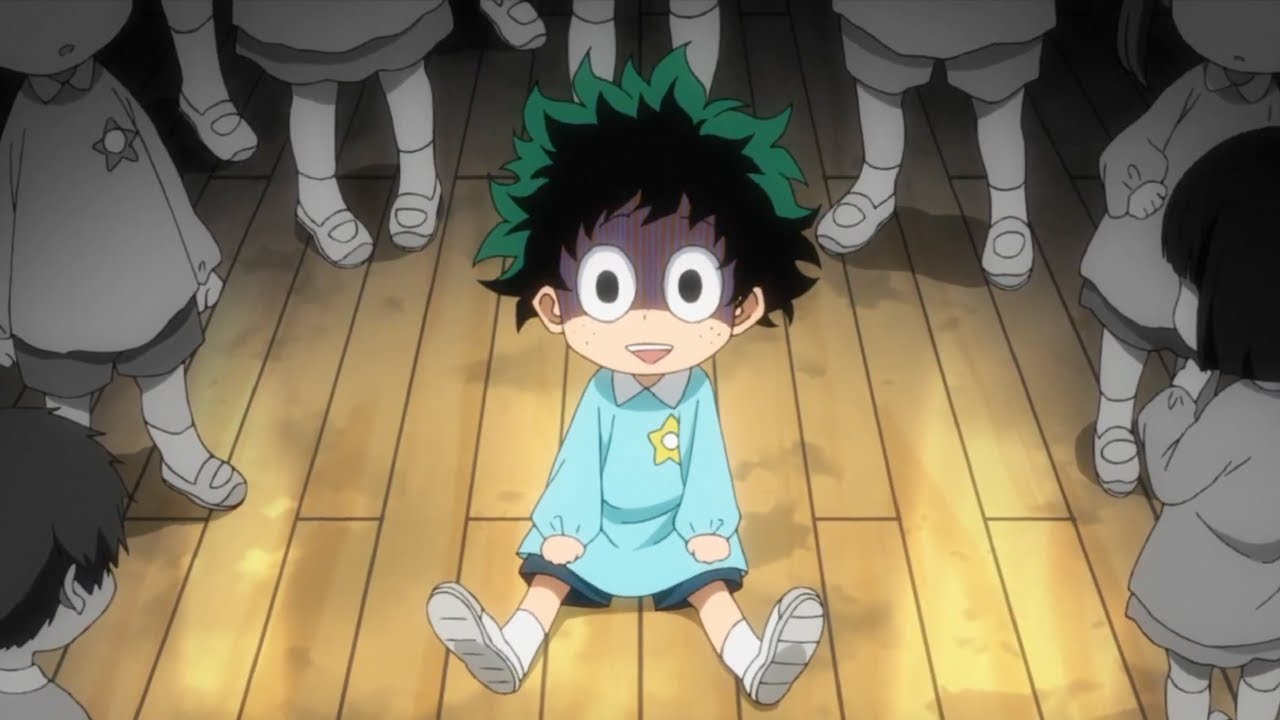
Midoriya’s self-doubt doesn’t suddenly disappear once All Might passes “All For One” on to him. He continually suffers from something akin to Imposter Syndrome, crediting everything he accomplishes with his new quirk to All Might. In addition, his progression at U-A with his classmates and teachers, makes him feel unworthy and guilty of accepting “All For One” and he vastly feels inferior when compared to his peers. He continually praises his classmates, impressed and fascinated by each of their quirks, and instantly gets nervous if they compliment him in return. He nearly jumps out of his skin when addressed by anyone, and instinctively flinches when Bakugo is around.
While Midoriya does gradually grow more confident in himself and slowly begins to accept “All For One” as his own quirk, this development takes place over several seasons and is still developing. Much like in reality, it takes a long time and a lot of hard work to undo the years of negativity that Midoriya has been filled with. It’s not surprising that he gets emotional when he’s praised by his life-long idol, or even when he finally realizes that he can become a hero and fulfill his childhood dream. Allowing Midoriya to express his emotions not only humanizes him, but normalizes this expression as well.
Demon Slayer
Demon Slayer (Kimetsu no Yaiba) is a supernatural shonen set in Taisho-era Japan (1912-1926). The story follows Tanjiro Kamado (竈門かまど炭たん治じ郎ろう) and his sister, Nezuko, after their family is attacked and killed by man-eating demons. Having been away from home, Tanjiro was the only one spared. He returns to find his mother, brothers, and sister dead, while Nezuko is barely alive. But Nezuko was exposed to the blood of the demon who attacked them, and was transformed into a demon when she awoke. When Nezuko (eventually) recognizes her brother and defends him rather than killing him, Tanjiro vows to travel with her and turn her back into a human.
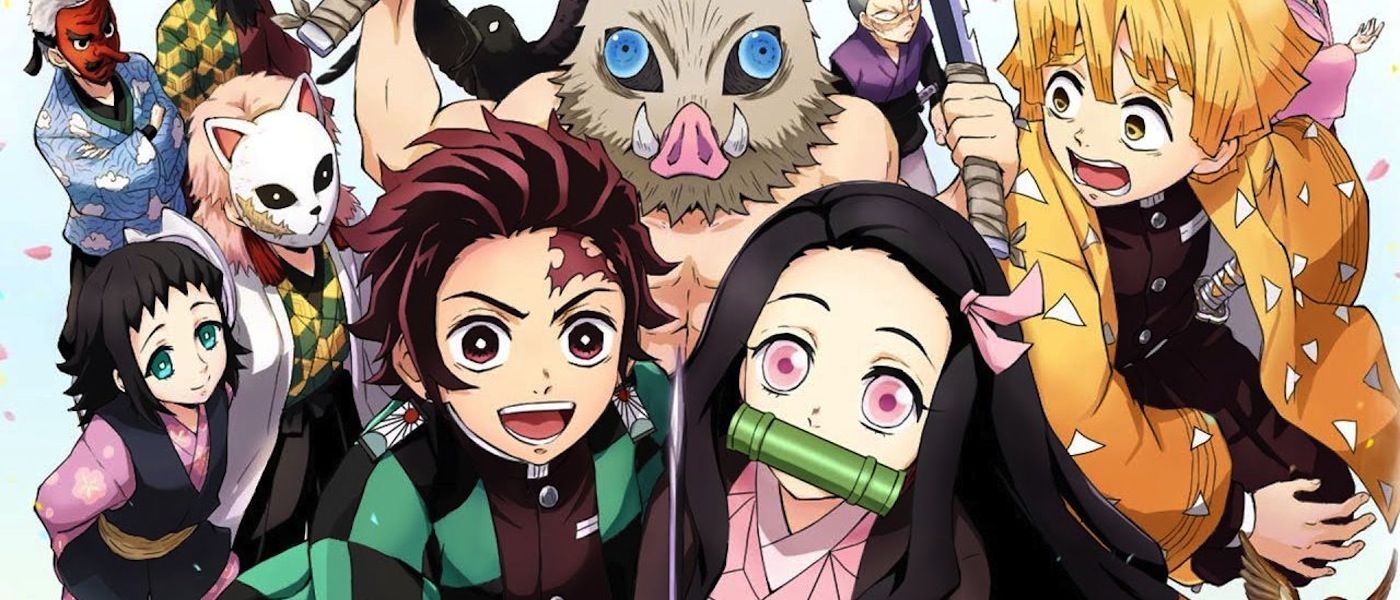
Tanjiro’s introduction to the Demon Slayer Corps is through Giyu Tomioka (冨とみ岡おか義ぎ勇ゆう). When Giyu arrives to slay the demonized Nezuko, Tanjiro emotionally begs him to spare his sister’s life. Sympathy for Tanjiro and Nezuko makes Giyu pause, and he berates Tanjiro for crying and putting his guard down instead of clearing his head and springing into action.
Giyu isn’t the first to tell Tanjiro to “act like a man” in the series, and he certainly isn’t the last. Tanjiro quickly understands the importance of keeping a level head in the face of adversity, but those words never come between him and the empathy he feels not only for Nezuko, but for every demon he encounters throughout the show.
Tanjiro vs Inosuke
Demon Slayer‘s shonen protagonist trope is arguably Inosuke, who also embodies toxic masculinity. Inosuke is excessively violent, carrying two serrated swords and challenging everyone he comes across to prove his strength. He is extremely short-tempered, impulsive, and uses brute force in every situation. Even more intimidating than his swords is the jarring boar’s head he wears to cover his own.
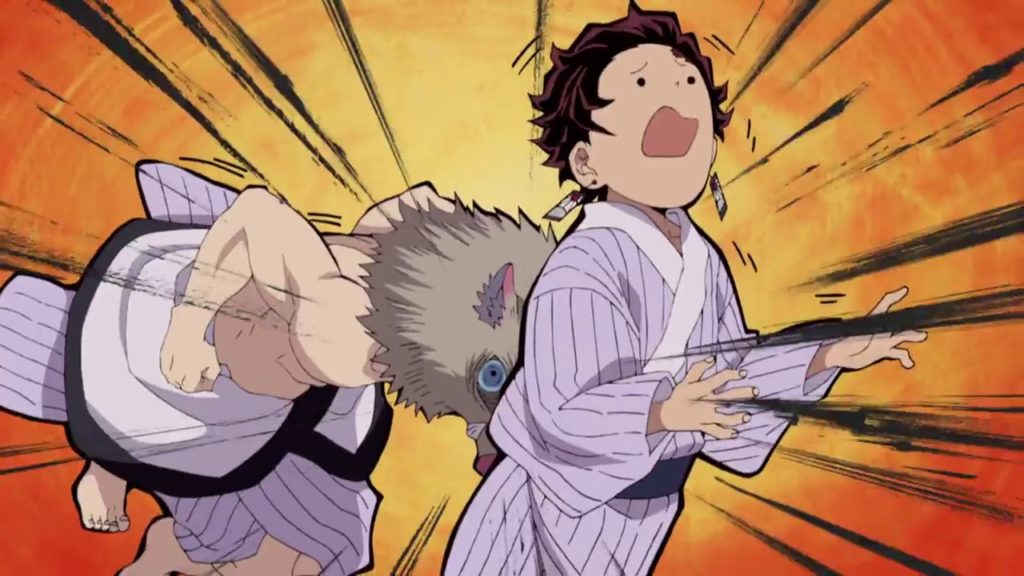
While Tanjiro is cautious and would rather gather information before entering an unknown situation, Inosuke’s bravado and impulsiveness cause him to rush into these situations head-first, often at the expense of himself or his companions. Eventually, Inosuke challenges a demon who is simply far too strong for him to defeat. This encounter leaves Inosuke barely alive and questioning the limits of his own strength.
Tanjiro’s kindness and empathy thwart Inosuke’s incessant challenges, because he doesn’t rise to his provocations. Inosuke is often left dumbfounded by him until he challenges Tanjiro less and less. As they travel together, he gradually grows accustomed to Tanjiro’s kindness, but since all he knows is violence and anger, he doesn’t how to react. Eventually, Tanjiro’s personality starts to influence Inosuke, and the demon slayer begins to recognize others beyond himself (including their emotional companion, Zenitsu) instead of determining their worth and his in terms of pure strength.
The Impact of Empathy
Tanjiro’s immense empathy for everyone he encounters baffles most of the story’s characters, especially the demon slayers. The demon slayers play the traditional role of the “good” in the age-old battle of good and evil, and therefore see the demons as nothing but their “evil” counterpart. Many members of the Demon Slayer Corps joined to get revenge for a slain loved one, and in turn they slay demons without thought or mercy.
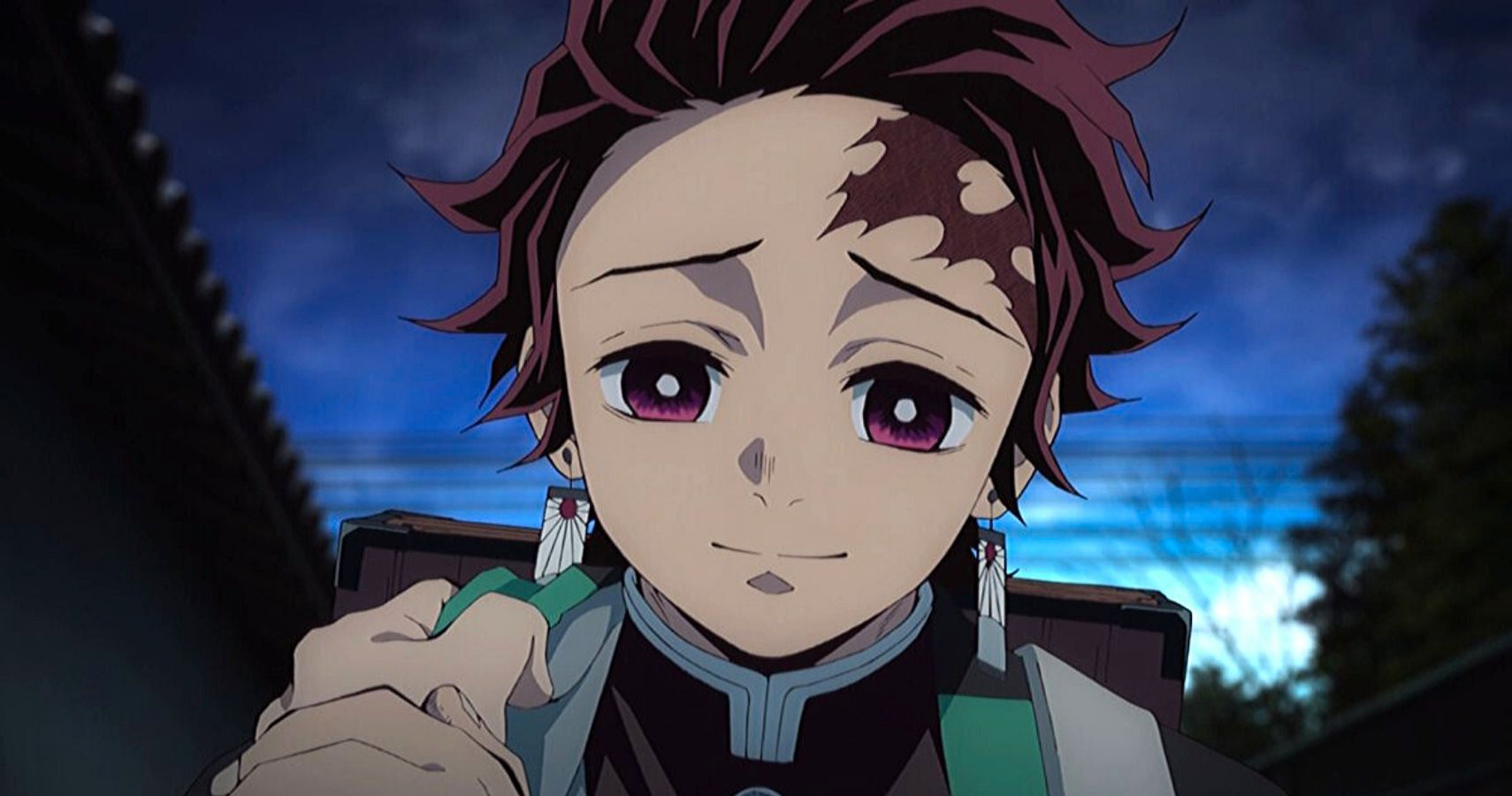
Even after his family was killed by demons and his sister was turned into one, Tanjiro never sought revenge. Instead, he sets out to find a cure for Nezuko. Tanjiro joins the Demon Slayer Corps purely for his sister, and he only engages in combat to save himself or others. When he does kill a demon, he pauses to pray for peace for them. His empathy gave him insight into the demon’s life as a human — something the demons themselves had long-since forgotten. The last thing the demons often see is Tanjiro either smiling sadly or crying, which provides a strangely tender moment immediately after a dark and violent battle.
Tanjiro’s kindness makes him seem like an easy person to take advantage of. Zenitzu, a fellow demon slayer, is terrified of almost everything (especially demons), and initially follows Tanjiro around practically demanding that he protects him. Tanjiro never objects to Zenitzu joining him, nor does he admonish him for his cowardice and tells him to fight. Like with Inosuke, Tanjiro’s kindness and empathy begins to affect Zenitzu. His instinct to save himself first gradually lessens as he travels with Tanjiro, and he slowly becomes more confident in himself. He grows braver with Tanjiro at his side and more willing to fight for the people he cares about.
A Different Shonen Protagonist
While the traditionally shonen anime protagonist is often stoic, arrogant, and lacking in most emotions other than anger and bravado, the protagonists of both My Hero Academia and Demon Slayer buck this trend with male leads who are emotional, vulnerable, and who often need to rely on others to succeed.
While Midoriya and Tanjiro share traits with traditional shonen protagonists, they don’t fall victim to pride or anger. They illustrate to their audiences that it’s okay to express emotions, that empathy is a strength, not a weakness, and that even heroes need to ask for help sometimes.
